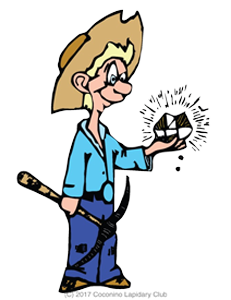Since ancient times jade[Ref1] has been used by artisans to create beautiful jewelry and works of art. Art objects of jade have been carved in China for more than 6000 years[Ref2] as exemplified by the jade dragon carved during the Zhou Dynasty (5th – 4th century BC) as shown in Figure 1. In Central America,. . . Read More
Mineral Man Mel
MINERAL STUFF: THE GEMSTONE JADE
PALEONTOLOGY OF AMBER
In this Blog I’ll describe how biomaterials including animal and plant fossils are included and preserved in amber formed from tree resin, which by its stickiness can entrap objects which contact its surface as shown in Figure . With further addition of the resin the object is sealed within the resin and out of the. . . Read More
MINERAL STUFF: AMBER, THE GEM
Amber is a hard resin formed from tree sap by fossilization and is many millions of years old[Ref1]. Since Neolithic times (about 9000-3000 BC) and before the Copper Age[Ref]2) amber has been highly valued as a gemstone and used to create beautiful jewelry and artworks. Wide use of amber in Early Europe and in the. . . Read More
Meteorites
Meteorites are stuff from outer space; each is a solid piece of debris which formed from dust within the protoplanetary disc or from object such as an asteroid, planetesimal, or planet, and which travels through space and falls through the atmosphere to the surface of earth. As alien objects which fall dramatically they have evoked. . . Read More
Precious Coral
Both precious red and black corals are bottom-dwelling sessile marine branched animals that have been harvested at depths between 60 and 20,000 feet [Ref 1, Ref 2]. They have provided lapidarists and other artisans with materials they use to create extraordinarily beautiful jewelry and objects of art, as witnessed by Figures 1 and 2. In. . . Read More
Art Deco Rubies
Art Deco is my favorite style of jewelry, with its flair of design and the use of unusual combinations of gemstones. Art Deco is a style of architecture and design which first appeared in France just before World War I, reached its high point during the 1925 Paris Exposition of Decorative Arts, and extended into. . . Read More
Ancient Rubies
In this continuation of blogs about the corundum gem varieties, sapphire and ruby, I will first describe the trade routes that first brought the gems, from their mines in the East, to the Roman Empire, then to the rest of Europe. I will also present a gallery of ruby jewelry and artworks designed and made. . . Read More
HARDNESS: A MECHANICAL PROPERTY OF USE IN IDENTIFYING MINERALS
Along with the colors and crystal forms of minerals, their mechanical properties such as the hardness. tenacity, and habits of structural failure can be very useful tools in identifying an unknown mineral. In this first Blog on the use of mechanical properties in identifying minerals I’ll focus on hardness and describe the Moh’s Hardness Scale,. . . Read More
Sapphire – Art Deco
Art Deco is my favorite style of jewelry with its flair of design and the use of unusual combinations of gemstones. Art Deco is a style of architecture and design which first appeared in France just before World War I, reaching its high point in the 1925 Paris Exposition of Decorative Arts, and extending into. . . Read More
Ancient Sapphires
In this blog I’m displaying examples of jewelry and art objects from ancient Asia and the Mughal Empire. I also include examples of jewelry from the Roman Empire and the Medieval Victorian Eras in Europe. ANCIENT ASIAN ANCIENT ROMAN EMPIRE MEDIEVAL EUROPEAN RENAISSANCE EUROPE VICTORIAN ENGLAND (EUROPE) REFERENCES Ref 1. https://onlineonly.christies.com/s/ancient-jewelry-wearable-art/central-asian-gold-sapphire-finger-ring-30/63724 Ref 2. https://www.internetstones.com/ancient-technology-sri-lankan-gemstone-beads-carvings-cameos-intaglios-carnelian-rock-crystal.html Ref. . . Read More
